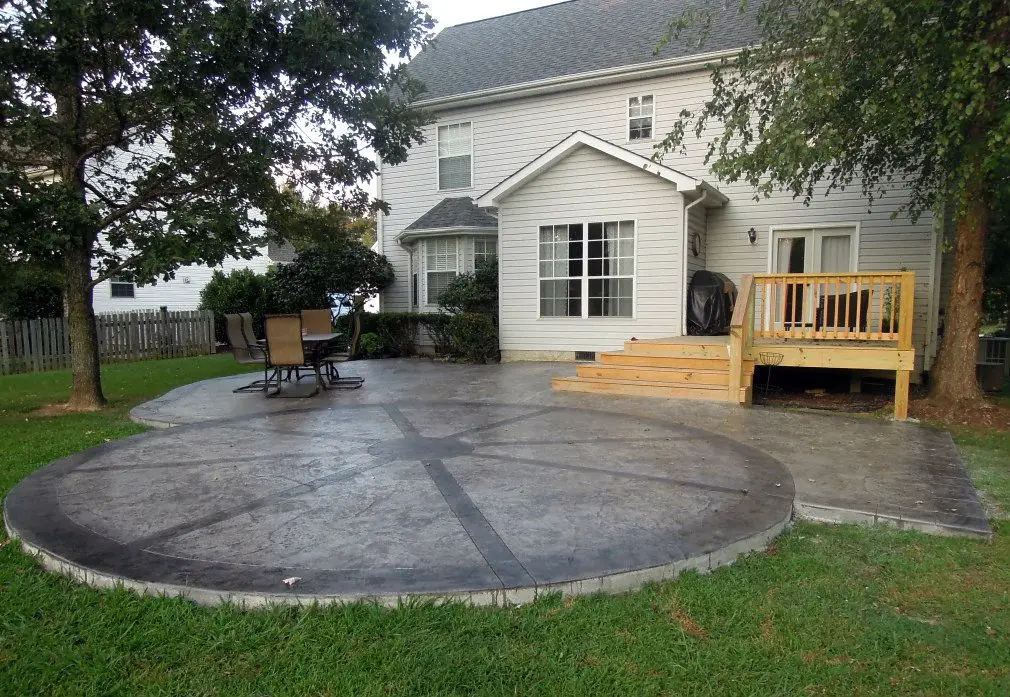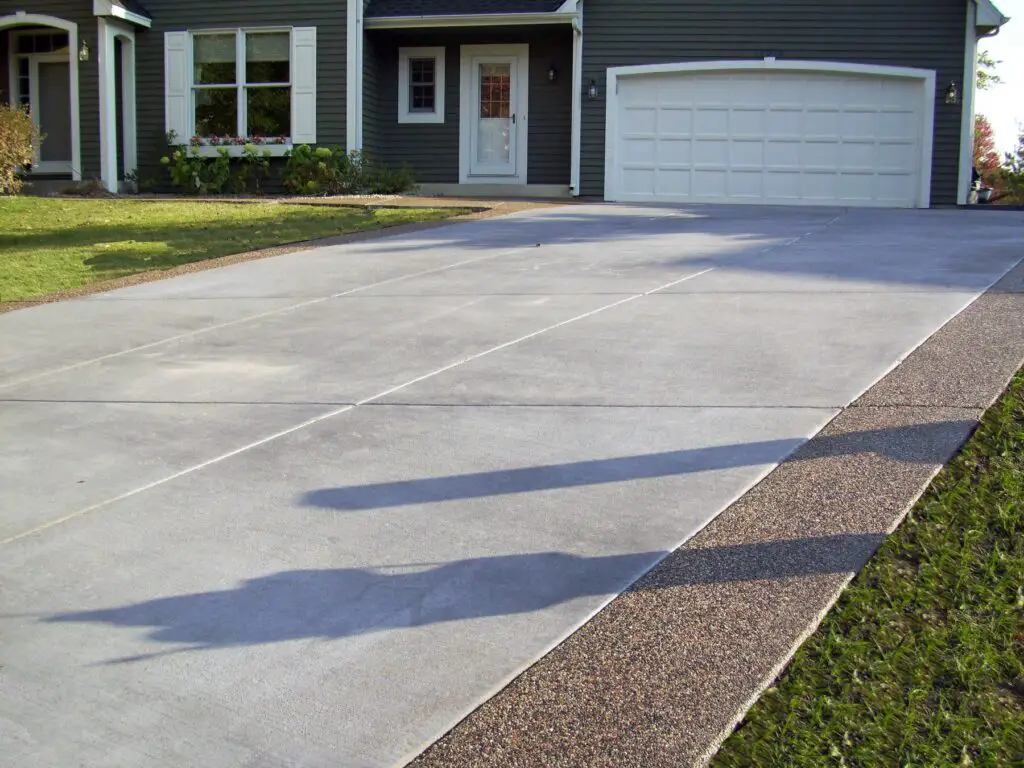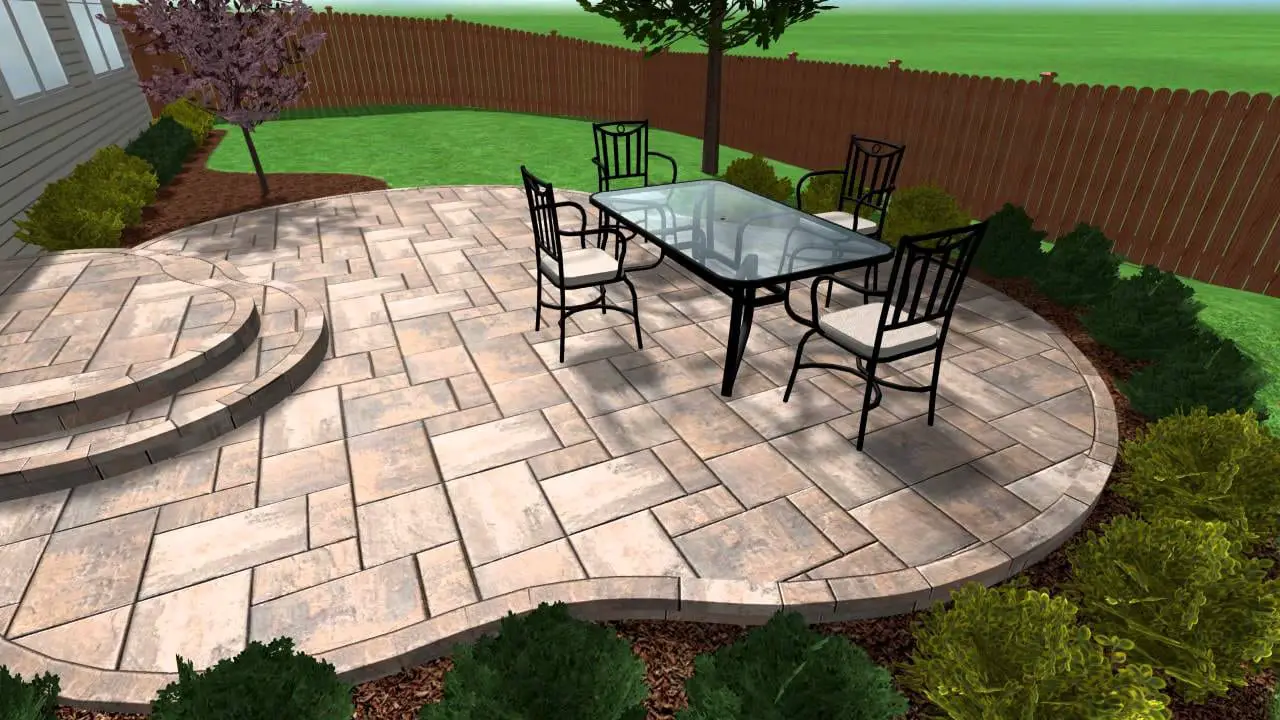How Long Does A Concrete Patio Last
Introduction
How Long Does A Concrete Patio Last: A concrete patio is a popular choice for homeowners looking to create an outdoor space that is both functional and aesthetically pleasing. With its durability and low maintenance requirements, a concrete patio can provide years of enjoyment for you and your family.
The lifespan of a concrete patio can vary depending on several factors, including the quality of the materials used, the installation process, and the level of maintenance it receives. Generally, a well-constructed concrete patio can last anywhere from 20 to 30 years or even longer with proper care.
One of the key factors that contribute to the longevity of a concrete patio door is the quality of the materials used in its construction. High-quality concrete that is properly mixed and reinforced with steel or other materials can withstand the test of time and resist cracking and other forms of damage. On the other hand, using low-quality materials or cutting corners during the construction process can significantly reduce the lifespan of your patio.
Another important thing to think about when figuring out how long a concrete patio will last is how it was installed. For the patio to be stable and last a long time, the site must be properly prepared. This includes making sure the dirt is packed down enough and using a solid base. A skilled contractor who has experience putting in concrete patios can also help make sure the patio is built to last.

Are concrete patios a good idea?
Concrete’s strong tensile strength allows it to withstand more weight and pressure than slabs, bricks, and other materials. Concrete makes a coherent, affordable backyard patio.
Concrete patios are sturdy and multifunctional, making them ideal for entertaining, dining, and relaxing outdoors. As with any home improvement job, there are benefits and cons to consider before installing a concrete patio.
A major benefit of concrete patios is their durability. Concrete is durable and can survive considerable foot traffic, adverse weather, and regular use. It Concrete is a cheaper patio material than wood or pavers because it doesn’t need frequent maintenance.
Concrete patios can be designed and customized, another benefit. Concrete can be poured in any shape or size, allowing you to customize your patio. Like stone or brick, it can be stamped, stained, or textured to seem like a high-end patio without the cost.
What is the life expectancy of a concrete slab?
If you take good care of concrete, it can last up to 100 years for big projects like houses. Projects made of concrete that get more use, like sidewalks and walkways, should last about half that long, or 50 years.
In building projects, concrete slabs are often used for foundations, floors, and sidewalks, among other things. The expected amount of time that a concrete slab will stay structurally sound and useful is called its “life expectancy.” The quality of the materials used, the way it was built, the weather, and how well it is maintained are all things that affect how long a concrete slab lasts.
As long as it is built and planned correctly, a concrete slab can last a very long time. But it’s important to remember that the lifespan can change based on the use and the other things we talked about. Most of the time, a concrete slab that is well taken care of can last for decades or even longer.
Factors Affecting Life Expectancy
If you want your concrete slab to last a long time, one of the most important things is the materials that were used to make it. Good concrete mixes with the right amounts of cement, aggregates, and water can be used to make a block that lasts longer and is stronger. Adding steel bars or fibers to the slab can also make it stronger and make it last longer.
If you want to know how long a concrete slab will last, you should look at how it was built. When you pack down, cure, and finish the slab, it’s important to do it the right way so that it stays strong and doesn’t crack or break down over time. When making, it’s also important to make sure the thickness is right and that the reinforcements are put in the right places.
Changes in temperature and humidity, as well as chemicals and acidic substances that come into contact with the slab, can all have a big impact on its service life. The slab may crack or flake if the temperature drops and rises quickly or if there is a lot of water. This makes it last less long. In the same way, chemicals like de-icing salts or acidic substances can damage concrete in the same way.
How do you maintain a concrete patio?
A strong, low-maintenance concrete patio can make any outdoor area better for relaxing and having fun. A concrete patio needs regular care to keep it looking good and protect it from damage from the weather, just like any other surface outside.
Regular cleaning is the first step in maintaining a concrete patio. Sweep often to get rid of dirt, leaves, and other junk. A hose or pressure cleaner can get rid of tough stains and dirt. For tough spots, a mild detergent or concrete cleaner might work. Before using cleaning products on the porch, make sure you follow the manufacturer’s instructions and test them in a small, hidden area.
To keep them from getting damp and breaking, concrete walkways need to be cleaned and sealed often. Concrete that is weak can crack and do other damage when it soaks up water. You can prevent this by sealing the concrete. Pick a concrete finish that works for your patio from the ones that are available.
Fixing any cracks or damage that happen is another important part of keeping a concrete patio. Cracks can appear because of settling, freeze-thaw cycles, or other things. To keep the damage from getting worse, these cracks need to be fixed right away. A concrete patching compound can often be used to fill in small cracks. However, bigger cracks may need to be fixed by a professional. Check your porch often for damage signs and fix them right away to keep the problem from getting worse.
Is it cheaper to lay concrete or pavers?
When it comes to choosing between concrete and pavers for your outdoor space, cost is often a significant factor to consider. Both options have their advantages and disadvantages, and the cost can vary depending on various factors. However, in general, concrete tends to be cheaper to install compared to pavers.
Concrete
Because it is cheap, concrete is a popular choice for many homes. Most of the time, installing concrete is cheaper than installing pavers because it takes less work and materials. Since the concrete is put into a mold and then left to dry, the installation process is pretty quick and easy.
In addition, concrete is a strong material that can stand up to a lot of foot traffic and bad weather. It doesn’t need much upkeep and, with the right care, can last for many decades. In the long run, these things help make it cost-effective.
Pavers
On the other hand, pavers are separate pieces that are made from different materials, like natural stone, concrete, or brick. Because more work and materials are needed, they are usually more expensive to build than concrete. Because each brick has to be laid by hand, the whole process can take a long time.
But bricks have a unique look and can be used in many ways. They come in many colors, shapes, and patterns, so you can give your outdoor place a look that is just right for you. Pavers are also known for being long-lasting; they can hold up under big loads without breaking.
Factors to consider
While concrete may be cheaper to install initially, it’s essential to consider other factors that can affect the overall cost. For example, if you need to repair or replace a section of concrete, it can be more challenging and costly compared to pavers, where individual pieces can be easily replaced.
Additionally, the cost of maintenance should also be taken into account. Concrete may require occasional sealing or repairs, while pavers may need occasional re-leveling or weed removal. These maintenance tasks can add to the long-term cost of both options.
What are the disadvantages of a concrete patio?
A concrete patio is a great addition to any outdoor space because it is long-lasting and easy to keep clean. It’s also a great place to relax and have fun. But, just like any other building material, concrete has some problems. Because you know about these problems, you can decide if a concrete patio is the best choice for your needs.
One of the worst things about a concrete patio is that it often cracks. Although concrete is a solid substance, it can change shape when the temperature and amount of water in it change. At some point, this could cause cracks to appear in the patio’s surface. Small cracks might not be a big deal, but bigger cracks can look bad and may need expensive fixes.
Another problem with a concrete patio is that it is easy to damage. Concrete is a porous object, which means it can take in liquids and other things. Especially if the patio isn’t properly sealed, this can leave spots on the surface that look bad. A concrete patio can get marks from food and drinks that get spilled, oil leaks from cars, and even leaves and other junk.
How long a concrete patio lasts on average depends on a number of things. But if you build and take care of your concrete patio the right way, it can last anywhere from 25 to 50 years or even longer. If you take good care of it, this lifetime can be increased even more.
Are there any factors that can affect the longevity of a concrete patio?
Over time, cracks and other structural problems can happen in patio concrete that isn’t good or that wasn’t made right. Temperature and weather also play a big role in how long a concrete patio lasts. Water, extreme weather, and freeze-thaw cycles can all speed up the breakdown of concrete.
How well you take care of your concrete patio can also affect how long it lasts. Concrete can be damaged by dirt, water, and other things if it isn’t cleaned and sealed regularly. When you clean your patio, don’t use strong chemicals or rough materials that could damage the surface. If the patio has good drainage, water won’t pool on it and cause cracks and other problems.
Can regular maintenance and care extend the lifespan of a concrete patio?
By maintaining your patio, you may prevent slight concerns from becoming major ones and extend its lifespan.
Surface cleanliness is crucial to care. Regularly picking up debris and cleaning the yard with a light detergent will prevent grime and stains. Sealing concrete every two years keeps water out and prevents cracking and breakdown.
To prolong the life of your concrete patio, repair any cracks or damage immediately. Small cracks might grow quickly if you don’t repair them with concrete patching solution right away. Checking for damage on a regular basis and correcting it immediately will prolong patio life.
Are there any specific measures that can be taken to ensure the durability of a concrete patio?
Yes, there are several specific measures that can be taken to ensure the durability of a concrete patio. One important measure is to properly prepare the site before pouring the concrete. This includes removing any vegetation or debris, compacting the soil, and installing a solid base. A well-prepared site will help prevent shifting or cracking of the concrete over time.
Another measure is to use high-quality materials and proper construction techniques. This includes using a strong concrete mix with the appropriate amount of water and reinforcing the concrete with steel rebar or wire mesh. Additionally, it is important to properly cure the concrete by keeping it moist for several days after pouring. This helps to prevent cracking and increases the overall strength of the patio.
Are there any signs or indicators that a concrete patio may need to be replaced?
There are a number of clues that can help you tell if your concrete patio needs to be rebuilt. Cracks or crumbling in large areas on the concrete surface are one of the most noticeable signs. When big cracks appear or chunks of concrete fall off, it might mean that the patio is no longer stable and needs to be rebuilt. Also, if the patio is sinking or uneven, it could mean that there are problems with the structure or soil underneath, which could mean that the whole thing needs to be replaced.
Another sign that a concrete patio might need to be changed is if it is very stained or discolored. Some stains can be fixed by cleaning and sealing the patio, but if there are deep-set stains or coloring that can’t be removed, the patio may need to be replaced to look good again. Also, if the patio is very worn or has a surface that is rough and falling apart, it might be cheaper to buy a new one than to try to fix or repair the old one.

Conclusion
A concrete patio is a popular choice for homeowners looking to create an outdoor space that is both functional and aesthetically pleasing. One of the most common questions that homeowners have when considering a concrete patio is how long it will last. The lifespan of a concrete patio can vary depending on a variety of factors, including the quality of the materials used, the climate in which it is installed, and the level of maintenance it receives.
First and foremost, the quality of the materials used in the construction of a concrete patio will greatly impact its lifespan. Using high-quality concrete and reinforcement materials, such as rebar, can significantly increase the durability and longevity of the patio. Additionally, proper installation techniques, such as adequate compaction and curing, are essential for ensuring the patio’s structural integrity.
The climate in which a concrete patio is installed can also affect its lifespan. Extreme temperature fluctuations, freeze-thaw cycles, and exposure to harsh weather conditions can cause concrete to crack and deteriorate over time. In regions with severe winters or high levels of precipitation, it is important to take extra precautions, such as using de-icing agents and sealing the patio regularly, to protect it from damage.
Maintenance plays a crucial role in extending the lifespan of a concrete patio. Regular cleaning, sealing, and reapplying protective coatings can help prevent staining, fading, and surface deterioration. It is also important to address any cracks or damage promptly to prevent further deterioration and potential safety hazards.








